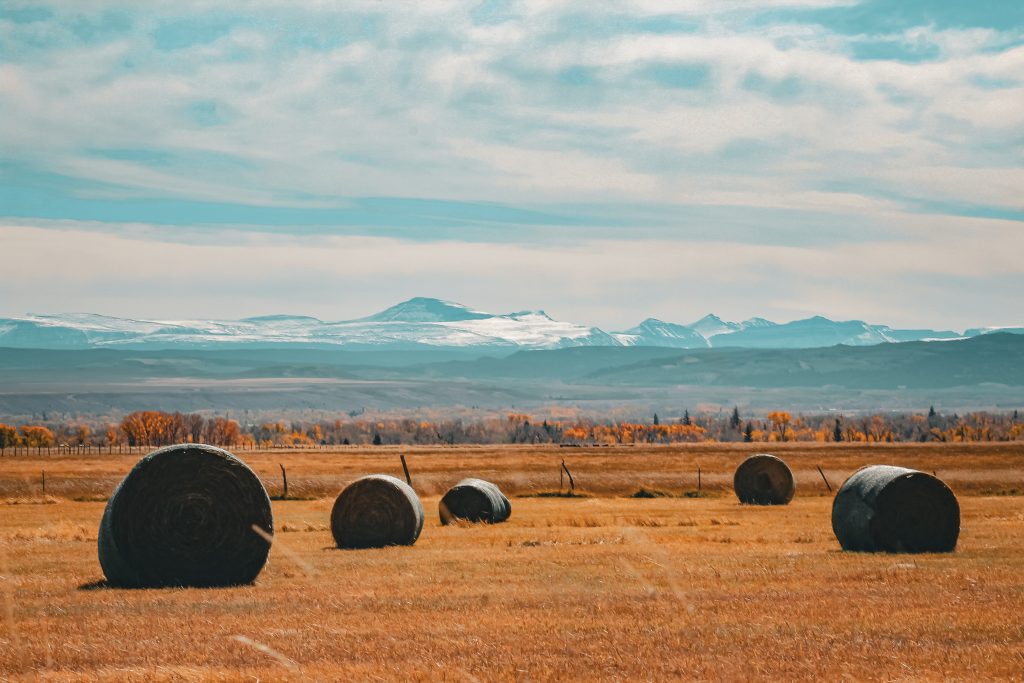Forage Storage: Producers encouraged to evaluate hay supply going into winter

Producers in the West can feel winter creeping in with each frosty morning and chilly evening. After arguably one of the hardest winters on record, this drop in temperature may not be welcomed by ranchers or their livestock.
However, with the cold sting of another winter just around the corner, producers should evalute their hay stocks and begin making a plan for the months ahead – especially for those in areas reeling from continued drought conditions.
Evaluating hay stocks
In a Farm Progress article, written by Sarah McNaughton and dated Sept. 22, Kansas State University Extension Cow/Calf Specialist Jason Warner says producers need to keep six things in mind when developing a winter feeding plan, especially in times of drought.
These include knowing herd inventory, knowing feed inventory, calculating forage needs, considering alternatives, minimizing feed and forage shrink and being flexible in looking for new opportunities.
According to Cornell University’s Kimberly Morrill, PhD, in order to calculate herd inventory, feed inventory and forage needs, producers need to know their current number of total animals and their nutritional needs – pregnant and/or lactating animals require more nutrients than those that are dry, animals in poor condition require more nutrients than those in good condition, etc.
Additionally, producers need to consider their potential growth – if they plan on expanding or downsizing – their feeding rates, the timeframe in which their feed supply needs to last and their current supply of feed and forage.
To help producers with these calculations, South Dakota State University (SDSU) created the Forage Inventory and Demand Calculator. This tool compares the quantity of forage available and the quantity of forage needed to meet the feed requirements of livestock on an operation.
SDSU Extension Livestock Business Management Field Specialist Heather Gessner notes producers can use the calculator to decide if they have enough hay to get through the winter in five simple steps.
SDSU’s Forage Inventory and Demand Calculator can be found at extension.sdstate.edu/forage-inventory-and-demand-calculator.
Penciling out a plan
In the unfortunate case an operation doesn’t have enough forage to meet their herd’s needs, there are several options producers can consider.
“Being short on hay for the winter isn’t a make or break, as there are several other options available to feed cattle,” states Ohio State University Beef Field Specialist Garth Ruff in an Oct. 30 Farm Progress article.
Ruff notes the most obvious solution to make up for a hay shortage is to buy more.
“If someone is looking to buy hay, the time is likely now, as hay prices should continue to rise throughout the late fall and winter months,” he says.
When buying hay in any volume, Ruff highly encourages producers to invest in a forage analysis since “not all hay is worth asking price.” He notes knowing the nutrient content of hay is the only way to confidently know the value of what one is purchasing.
“Upon receiving a forage analysis, important numbers to look for are total digestible nutrients (TDN), crude protein (CP) and neutral detergent fiber (NDF),” Ruff explains. “A hay sample with a TDN value of less than 60 will not provide sufficient energy to a 1,200-pound beef cow. CP can have a great range depending on forage type and cutting.”
He continues, “The value for NDF is an indicator of forage digestibility. The lower the number, the better. Grass with an NDF above 60 percent is often mature grass with lower digestibility. Visual appraisal and smell are good indicators to evaluate spoilage and weathering, more so than forage quality.”
Another option is to supplement grain, and Ruff points out cereal grains, especially corn, are often the most cost effective sources of energy.
“As harvest continues and corn futures hover near or below five dollars per bushel, corn coupled with some lower-quality, cheaper forage may be an option to help get cattle through the winter months,” he says.
A third option for producers with low forage supply – in certain areas – may be to graze fall pasture or cornstalks.
When doing this, Ruff recommends utilizing principles of rotational grazing to allow cattle to maximize available dry matter.
Lastly, Ruff notes in some instances, producers should sit down and pencil out the cost difference in purchasing supplemental feed versus culling a few of the lesser-performing cattle in the herd.
“Culling productive females is a tough decision – ask ranchers in the West – especially as the national cow herd continues to contract, leading to an even smaller 2024 calf crop than what we had this year,” he states. “A short calf supply will lead to continued strength in the cattle market going forward.”
“There isn’t a one-size-fits-all answer to making up for feed shortages, but having a plan can save some headaches when the weather turns cold,” Ruff concludes.
Hannah Bugas is the managing editor of the Wyoming Livestock Roundup. Send comments on this article to roundup@wyr.net.





